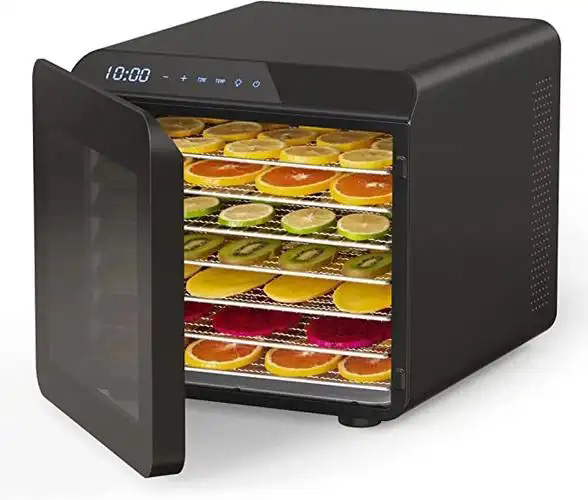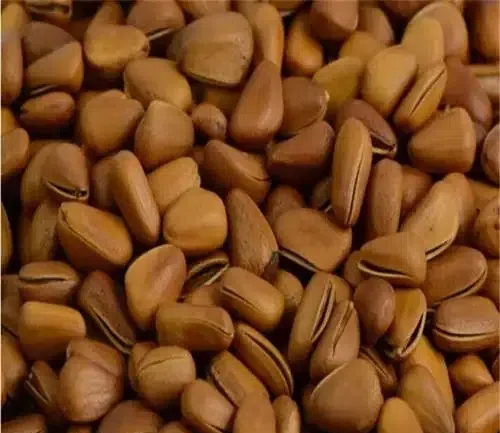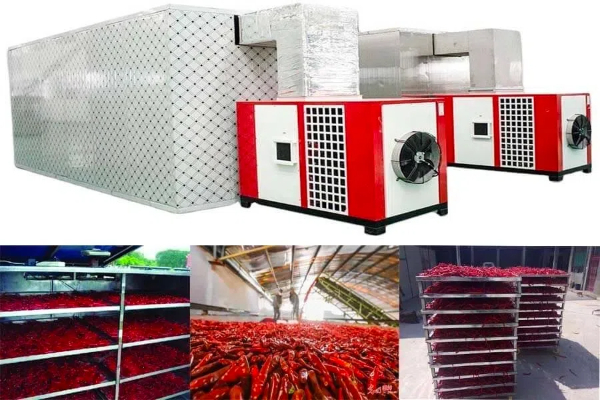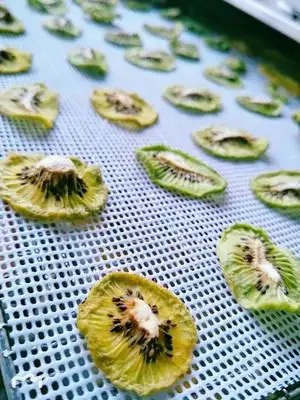
Content Menu
● Understanding Heat Pump Food Dehydrators
>> How Heat Pump Dryers Work
● Advantages of Heat Pump Food Dehydrators
● Do Heat Pump Dryers Require Plumbing?
>> Key Points Regarding Plumbing:
● Applications of Heat Pump Food Dehydrators
>> Additional Applications
● Factors Influencing Drying Efficiency
● Maintenance of Heat Pump Food Dehydrators
● Energy Consumption Comparison
● Conclusion
● FAQ
>> 1. What types of foods can be dried using a heat pump dryer?
>> 2. How does a heat pump dryer compare to traditional dehydrators?
>> 3. Is maintenance required for heat pump food dehydrators?
>> 4. Can I use a heat pump dryer in any climate?
>> 5. How long does it take to dry food using a heat pump dryer?
Food dehydration is a crucial process in the food industry, allowing for the preservation of various products while maintaining their nutritional value and flavor. Among the different technologies available, heat pump dryers have gained significant popularity due to their efficiency and effectiveness. This article explores the workings of heat pump food dehydrators, their advantages, and whether they require plumbing.

Understanding Heat Pump Food Dehydrators
A heat pump food dehydrator utilizes advanced technology to remove moisture from food products. Unlike traditional dehydrators that rely on direct heat sources, heat pump dryers operate using a refrigeration cycle that extracts heat from the surrounding air and transfers it to the drying chamber. This method not only conserves energy but also allows for precise temperature control, which is essential for preserving the integrity of food.
How Heat Pump Dryers Work
- Heat Transfer: The dryer absorbs ambient air, which contains heat. This heat is then compressed, raising its temperature before being circulated into the drying chamber.
- Moisture Removal: As hot air passes over the food, it absorbs moisture. The humid air is then expelled from the unit, maintaining a low humidity environment conducive to drying.
- Energy Efficiency: Heat pump dryers are designed to be energy-efficient. They use less electricity compared to conventional drying methods because they recycle heat within the system.
Advantages of Heat Pump Food Dehydrators
Heat pump food dehydrators offer several benefits over traditional drying methods:
- Energy Efficiency: They consume significantly less energy by using ambient air for heating rather than generating heat through combustion or electric heating elements.
- Cost-Effectiveness: Although the initial investment may be higher, the long-term savings on energy bills make them a cost-effective solution for food processing businesses.
- Nutrient Preservation: The controlled low-temperature drying process helps retain nutrients that might otherwise be lost in high-heat drying methods.
- Reduced Drying Time: The efficient heat transfer results in faster drying times without compromising quality.
- Environmental Impact: These dryers produce minimal emissions and are considered eco-friendly due to their energy-saving capabilities.
Do Heat Pump Dryers Require Plumbing?
One common question regarding heat pump dryers is whether they require plumbing systems for operation. The answer is no; heat pump dryers do not require plumbing. They function independently of water lines or drainage systems.
Key Points Regarding Plumbing:
- Condensate Management: While these dryers do produce condensate as a byproduct of moisture removal, this water can typically be drained through a simple hose that directs it outside or into a collection tank.
- Installation Flexibility: Since no plumbing is needed, heat pump dryers can be installed in various locations without concern for water supply or drainage access.

Applications of Heat Pump Food Dehydrators
Heat pump dehydrators are versatile and can be used for various applications:
- Fruits and Vegetables: Ideal for drying fruits like apples, bananas, and vegetables such as carrots and tomatoes without losing flavor or nutrients. The ability to maintain lower temperatures ensures that delicate fruits retain their color and taste.
- Meats: Perfect for making jerky or other dried meat products while ensuring safety and quality. The controlled environment minimizes the risk of bacterial growth during the drying process.
- Herbs and Spices: Efficiently dries herbs while maintaining their aromatic properties. This is particularly important for culinary applications where flavor concentration is key.
Additional Applications
Beyond these common uses, heat pump dryers can also be employed in other sectors:
- Snack Production: Businesses looking to create healthy snack options can utilize heat pump dryers to produce dried fruits, vegetable chips, or granola clusters without added preservatives.
- Pet Food Manufacturing: The pet food industry benefits from heat pump technology by producing high-quality dried meats and vegetables that enhance pet nutrition without sacrificing safety.
- Pharmaceuticals: In pharmaceutical applications, precise moisture control is essential for product stability. Heat pump dryers can effectively remove moisture from sensitive compounds while maintaining their efficacy.
Factors Influencing Drying Efficiency
Several factors can influence how efficiently a heat pump dryer operates:
- Airflow Design: Proper airflow design ensures that hot air circulates evenly around the food items. This uniform distribution of heat prevents uneven drying and helps achieve consistent results.
- Temperature Settings: Different foods require different drying temperatures. Understanding optimal temperature settings for various products can enhance efficiency and quality.
- Humidity Levels: Ambient humidity plays a significant role in the drying process. In high-humidity environments, it may take longer to achieve desired moisture levels in food products.
Maintenance of Heat Pump Food Dehydrators
To ensure optimal performance and longevity of heat pump food dehydrators, regular maintenance is essential:
- Cleaning: Regularly clean trays and surfaces to prevent residue buildup that could affect airflow and hygiene.
- Filter Replacement: Some models come with filters that need periodic replacement to maintain airflow efficiency and prevent dust accumulation.
- Inspection: Regular inspections of seals and gaskets ensure that there are no leaks in the system, which could compromise efficiency.
Energy Consumption Comparison
When considering energy consumption, it's essential to compare heat pump dryers with other types of dehydrators:
| Type of Dehydrator | Energy Source | Average Energy Consumption |
| Traditional Electric | Electric Heating | High |
| Gas-Fired | Natural Gas | Moderate |
| Heat Pump | Ambient Air | Low |
As seen in this comparison table, heat pump dryers stand out as the most energy-efficient option among common dehydrator types. Their ability to utilize ambient air significantly reduces operational costs over time.
Conclusion
In conclusion, heat pump food dehydrators represent a modern solution for food preservation that combines efficiency with quality. Their ability to operate without plumbing makes them adaptable to various settings, providing businesses with flexibility in installation. With advantages such as energy efficiency, cost-effectiveness, nutrient retention, and versatility across different applications, these machines are becoming increasingly popular in the food processing industry.
As businesses continue to seek sustainable practices while maintaining product quality, investing in heat pump technology will likely become a standard practice in food dehydration processes worldwide.

FAQ
1. What types of foods can be dried using a heat pump dryer?
Heat pump dryers can effectively dry fruits, vegetables, meats, herbs, and spices while preserving their flavor and nutrients.
2. How does a heat pump dryer compare to traditional dehydrators?
Heat pump dryers are more energy-efficient and provide better temperature control compared to traditional dehydrators that rely on direct heating methods.
3. Is maintenance required for heat pump food dehydrators?
Regular cleaning of trays and monitoring of filters is necessary to ensure optimal performance, but overall maintenance is minimal compared to other systems.
4. Can I use a heat pump dryer in any climate?
Yes, heat pump dryers are designed to operate efficiently in various climates since they extract ambient air for heating.
5. How long does it take to dry food using a heat pump dryer?
Drying times vary based on the type of food and its moisture content but generally range from several hours to over a day for complete dehydration.












